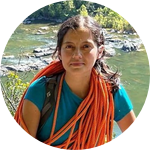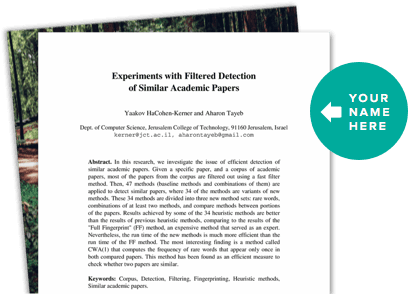About This Project
Invasive species threaten the composition of deciduous forests in the Northeastern United States. In particular, the invasive shrub Japanese Barberry (Berberis thunbergii) is known for altering species composition by competing with native vegetation. The lack of native tree regeneration can compromise the future of these forests. A central Pennsylvania forest was selected for restoration, testing removal techniques and native plant additions.
Ask the Scientists
Join The DiscussionWhat is the context of this research?
Invasive species are disrupting the balance and health of forests in the Northeastern U.S. Particularly, the invasive shrub "Japanese Barberry" (Berberis thunbergii DC) has impacted these forests by blocking sunlight and preventing seedlings from growing. Furthermore, Barberry creates thickets where ticks carrying Lyme disease thrive, posing a health risk to humans and animals.With climate change likely to fuel its spread, it's crucial to develop and implement effective, climate-smart control methods. Our project aims to provide practical solutions to help both private and public landowners restore their forests and manage this growing problem.
What is the significance of this project?
Human activities have significantly impacted forests in the Northeastern U.S., making them one of North America's most affected regions. A study in the Eastern National Parks found a long-term increase in invasive plants, with grasses and shrubs being the biggest threats. Japanese Barberry is a major concern, as its spread can disrupt forest ecosystems by reducing native species and altering soil and microbial communities. This has raised both public health and environmental concerns, leaving forest managers unsure of how to restore these areas. While our project focuses on Japanese Barberry, our findings provide useful strategies for managing other invasive shrubs in the Northeastern Deciduous forests.
What are the goals of the project?
Through observation and experimentation in the infested areas, this study aims to fill existing knowledge gaps and contribute to developing science-based management strategies, which are critically needed for effective ecosystem restoration and invasive species control. A field and a greenhouse experiment are proposed. The field experiment will evaluate the soil and vegetation changes in a natural environment. In contrast, the greenhouse experiment will focus on the germination of native species and Japanese Barberry seeds under ambient and warmer temperatures. The field experiment aims to evaluate the effectiveness and changes in the natural community before and after the treatments. While the greenhouse experiment will expand on understanding native seed interactions and performance in invaded forests. Overall, we aim to combine field and greenhouse data to better inform forest restoration practices that promote climate-resilient forests.
Budget
We have available a detailed list of the materials included in each group, if needed. Biomaterials include native seedlings, mulch, and their transportation costs. Field supplies consist of items to construct deer exclusion cages to protect the seedlings from browsing, as well as protective equipment for people. Transportation refers to the fuel costs for transporting materials and people from campus (PSU- University Park) to the forest. Laboratory training and rental include the rental of laboratory equipment for soil analysis tests. Finally, soil sampling will require the acquisition of several samplers to efficiently collect the soil samples on a tight schedule.
To reduce costs, I will collaborate with the forest manager and undergraduate students to set up the experiment. Likewise, I will conduct all laboratory tests through an agreement with Dr. Jason Kaye, the soil science professor. Native seeds have been generously donated by two private companies.
Endorsed by
 Project Timeline
Project Timeline
The project is scheduled to begin in early spring of 2025. Due to the lifecycle of the invasive shrub Japanese Barberry, the first intervention in the field experiment must occur before native trees emerge from dormancy. Consequently, the initial intervention is planned for late May, followed by a second intervention in late August. Meanwhile, the controlled conditions of the greenhouse experiment will allow it to start in August 2025 and last for 4 months, until December 2025.
Jan 28, 2025
Project Launched
Mar 10, 2025
First intervention of field experiment
Aug 11, 2025
Greenhouse experiment starts
Aug 25, 2025
Second intervention of field experiment
Dec 06, 2025
Greenhouse experiment finishes
Meet the Team
Team Bio
Geo4eco is a research lab effort led by Travis Flohr, Ph.D., and Mehdi Heris, Ph.D. We collaboratively plan and design healthy, climate-resilient, and biodiverse communities by leveraging community participation, spatial data analyses, ecology, and design to mitigate extreme heat and biodiversity loss.
Web page: https://geo4eco.com/
Diana Albuja
I am from Quito, Ecuador. Surrounded by Andean forests and mountains, I have always been interested in plant ecology. My bachelor’s degree is in Ecology and Environmental Conservation from the National University of Santiago del Estero, Argentina. As an undergrad and a professional, I worked on different ecosystems such as the Amazon Forest, Andrean ecosystems, and the Galapagos Islands. Those research projects were mainly focused on vegetation community assemblage and insect ecology. However, I wanted to direct my efforts toward Forest Restoration Ecology and started a Ph.D. in Ecology at Penn State in the Fall of 2022. Currently, I am studying invasive plant species control techniques and ecological restoration methods as a strategy for climate-resilient forests.
Lab Notes
Nothing posted yet.
Project Backers
- 11Backers
- 14%Funded
- $720Total Donations
- $65.45Average Donation


